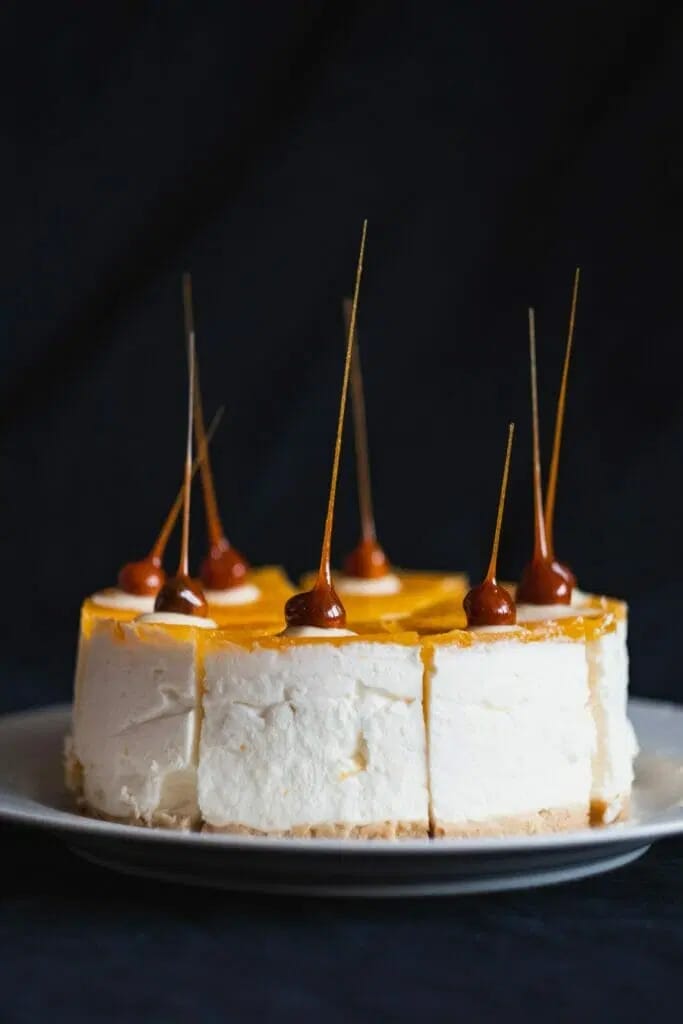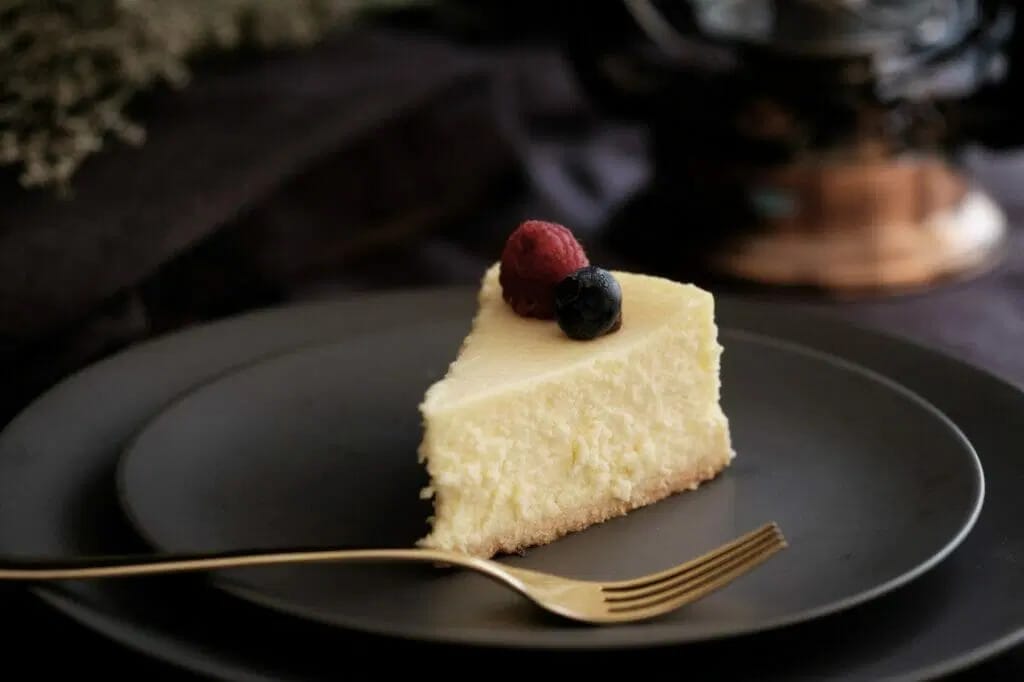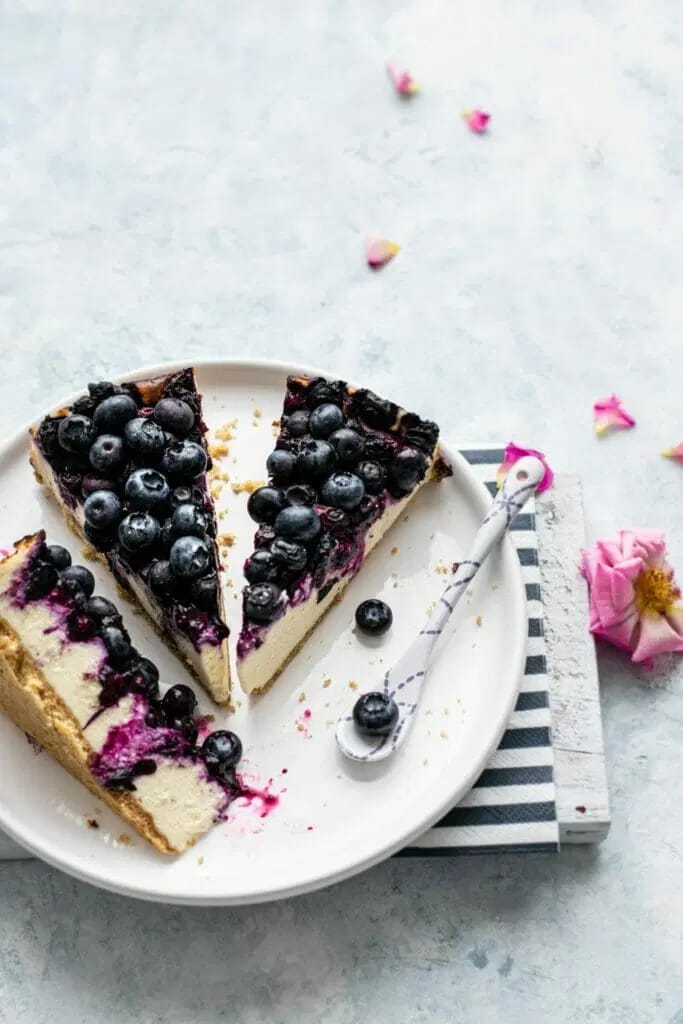As an Amazon Associate, I earn from qualifying purchases. In addition, I participate in several other affiliate programs that allow me to earn while I recommend products I love.
Indulging in a rich and creamy cheesecake is one of life’s greatest pleasures for dessert lovers.
The velvety smoothness and melt-in-your-mouth goodness of a well-made cheesecake are hard to resist.
Whether you’ve baked a luscious New York cheesecake with a buttery graham cracker crust or a refreshing no-bake version with a fruity topping, knowing how to store it properly is crucial to maintain its taste and texture.
In this guide, we’ll explore the best storage methods to keep your cheesecake fresh for longer enjoyment, including how to store cheesecake in fridge, how to store baked cheesecake, how to store cheesecake in freezer and how to store cheesecake in fridge after baking.

Room Temperature vs. Refrigeration: Making the Right Choice
How do you store cheesecake?
When it comes to storing your cheesecake, you’ll face a decision between two methods: room temperature or refrigeration.
The choice depends on your plans for consuming the cake and the duration of storage.
For short-term consumption, such as serving the cake at a party or gathering, you can safely keep your cheesecake at room temperature for up to 2 hours after serving it.
However, for longer storage or if you have leftovers, refrigeration is your best bet.
The cold environment of the refrigerator helps slow down the spoilage process and preserves the creaminess of the cheesecake.
When refrigerating your cheesecake, it’s essential to cover it with plastic wrap or place it in an airtight container to prevent it from drying out.
This simple step ensures that the cheesecake retains its moisture and won’t absorb any unwanted odors from the refrigerator, which could affect its taste.
Refrigerating Cheesecake: Step-by-Step Guide

Refrigerating your cheesecake is a straightforward process that ensures its freshness for several days:
Cool the Cheesecake
Allow the cheesecake to cool to room temperature on a wire rack after baking.
This step prevents condensation from forming inside the container when refrigerated.
Cover the Cheesecake
Once cooled, cover the cheesecake with plastic wrap, ensuring it is wrapped securely but not too tight.
Alternatively, you can place the cheesecake in an airtight container.
This protective layer prevents the cheesecake’s surface from drying out and maintains its smooth texture.
Refrigerate the Cheesecake
Place the covered cheesecake in the refrigerator.
The optimal temperature for storing cheesecake is between 36°F to 40°F (2°C to 4°C). Refrigerate the cheesecake for up to 5 days to enjoy it at its best.
Bring to Room Temperature Before Serving
Before serving the refrigerated cheesecake, remove it from the refrigerator about 30 minutes beforehand.
Allowing the cheesecake to come to a slightly cooler room temperature enhances its flavors and ensures a velvety smooth experience.
Freezing Cheesecake for Extended Storage

If you have an abundance of cheesecake or want to prepare in advance for future indulgence, freezing is an excellent option.
Freezing cheesecake can extend its shelf life to up to 2-3 months.
To freeze cheesecake successfully:
Cool the Cheesecake Completely
Allow the cheesecake to cool completely after baking and before freezing.
Ensure it has reached room temperature before proceeding to prevent condensation during freezing.
Wrap the Cheesecake Tightly
Wrap the cooled cheesecake tightly with plastic wrap, ensuring all sides are covered.
This layer of protection prevents freezer burn and keeps the cheesecake fresh.
Double-Wrap for Extra Protection
For additional protection, place the wrapped cheesecake in a resealable freezer bag or an airtight container.
Label the package with the date of freezing to keep track of its shelf life.
Thawing the Cheesecake
When you’re ready to enjoy the frozen cheesecake, place it in the refrigerator overnight to thaw gradually.
Avoid defrosting the cheesecake at room temperature, as rapid temperature changes can affect its texture.
Tips for Safe and Fresh Storage

Maintaining proper hygiene and food safety practices is essential when storing cheesecake:
Clean Hands and Surfaces
Always ensure your hands and work surfaces are clean when handling the cheesecake.
Avoid cross-contamination to keep the cake safe for consumption.
Avoid Strong-Smelling Foods
Store the cheesecake away from strong-smelling foods in the refrigerator to prevent it from absorbing unwanted odors.
Cheesecake easily picks up odors, which can alter its taste and aroma.
Prevent Moisture Buildup
To avoid condensation and moisture buildup on the cheesecake’s surface, wrap it tightly with plastic wrap or place a paper towel on top before covering it.
This helps maintain the cheesecake’s texture and appearance.
Storing Different Types of Cheesecakes

Different types of cheesecakes have slightly different storage requirements:
Classic New York Cheesecake
A classic New York cheesecake with its dense and creamy texture stores well in the refrigerator.
Properly wrapped and refrigerated, it will retain its rich flavor and velvety mouthfeel.
No-Bake Cheesecake
No-bake cheesecakes are lighter and airier than their baked counterparts.
For this reason, they set better in the refrigerator and should be stored there.
Avoid keeping no-bake cheesecakes at room temperature to preserve their delicate consistency.
Fruit-Topped Cheesecake
If your cheesecake is topped with fresh fruit or fruit compote, it’s best to refrigerate it to keep the fruit fresh and prevent spoilage.
The cool environment of the refrigerator helps maintain the fruit’s vibrant color and flavor.
Reviving Stale Cheesecake

If you find that your cheesecake has dried out slightly after refrigeration or freezing, fear not!
There are ways to revive its decadent taste:
Add Toppings and Sauces: Enhance the flavor and moisture of slightly dry cheesecake by topping it with fresh fruits, chocolate ganache, or fruit sauces. These additions not only add moisture but also create a delightful burst of flavors.
Repurpose Leftovers: Don’t let leftover cheesecake go to waste. Crumble it to create a delightful cheesecake parfait, or use it as a base for a delectable cheesecake trifle. Incorporating the leftovers into creative dessert ideas ensures that no slice of cheesecake goes uneaten.
Hey! Want more dessert storage tips? Check this out!
